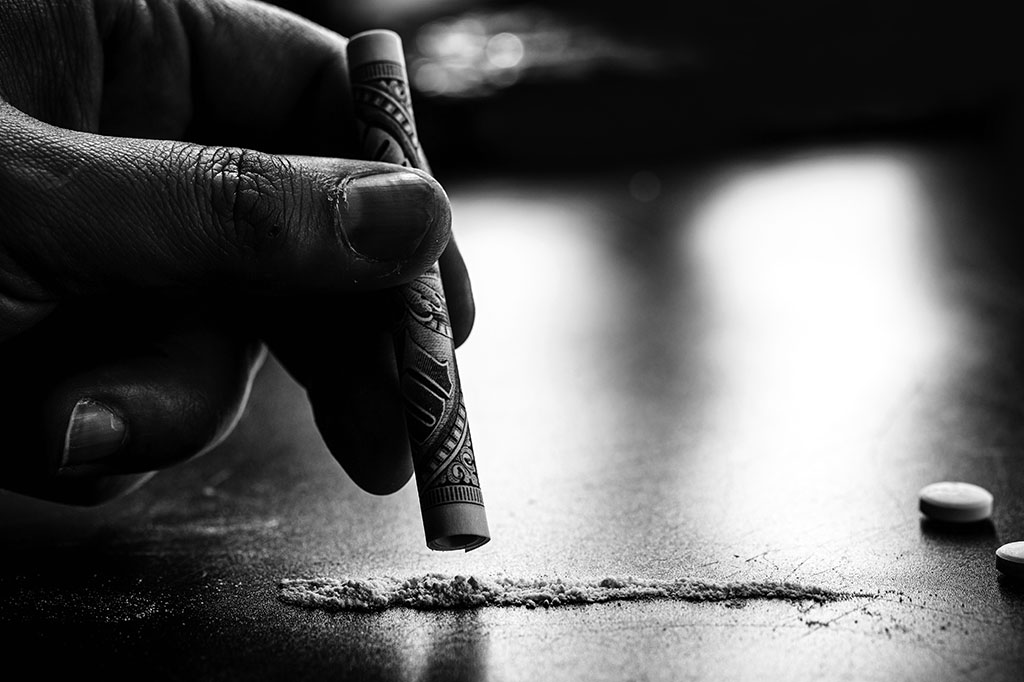How Long Does Vicodin Stay In Your System?
January 4, 2023


Can You Snort Hydrocodone?
February 1, 2023How Long Does Vicodin Stay In Your System?
January 4, 2023


Can You Snort Hydrocodone?
February 1, 2023

The drug hydrocodone is a commonly prescribed opioid that’s used to treat moderate to severe pain. It works by attaching to mu-opioid receptors in the central nervous system and other areas of the body, not only blocking pain signals but also stimulating dopamine activity.
Dopamine is a feel-good chemical that’s normally released in the brain whenever we engage in pleasurable activities and reinforces the repetition of these behaviors. Because this opioid manipulates dopamine and produces euphoria in high doses, addiction, physical dependence, and withdrawal from hydrocodone are common among long-term users.
What Are the Withdrawal Symptoms of Hydrocodone?
Hydrocodone is the primary active component of several common prescription painkillers, including Vicodin. Hydrocodone products are among the most commonly prescribed drugs in the nation. Due to its high potential for abuse and addiction, hydrocodone products were moved to the more tightly controlled Schedule II Drug Enforcement Administration (DEA) classification.
Opiate drugs bind to opioid receptors throughout the brain and central nervous system, depressing certain physiological functions like breathing rate, heart rate, blood pressure, and body temperature. In higher doses, they also stimulate dopamine activity, producing a euphoric high. The high, combined with the desire for pain relief, often contributes to hydrocodone abuse, which then results in physical dependence and tolerance.
When someone is dependent on a drug like hydrocodone, the sudden removal of it can have a distressing effect on the brain and body. The normally depressed physiological functions are suddenly spiked when hydrocodone is absent, resulting in various symptoms.
Common hydrocodone withdrawals include:
-
Agitation
-
Anxiety
-
Chills
-
Depression
-
Diarrhea
-
Difficulties focusing or concentrating
-
Drug cravings
-
Excessive tearing
-
Fatigue
-
Goosebumps
-
Headache
-
High blood pressure
-
Irregular heart rate
-
Irritability
-
Mood swings
-
Muscle aches
-
Nausea and abdominal cramps
-
Night sweats
-
Restlessness
-
Runny nose
-
Sweating
-
Thoughts of suicide
-
Trouble feeling pleasure
-
Trouble sleeping
-
Vomiting
-
Yawning
Suddenly quitting hydrocodone can impact blood pressure, respiration, body temperature, and other functions. Withdrawal from hydrocodone can also lead to severe dehydration as a result of diarrhea and vomiting, which can be life-threatening if the individual does not receive medical treatment. For this reason, our Christian drug rehabilitation center recommends that those dependent on hydrocodone undergo medical opioid detox.
How Long Does Hydrocodone Withdrawal Last?
Most hydrocodone products, including Norco and Vicodin, are immediate-release formulations, with a duration of effects lasting roughly 4 to 6 hours, although some extended-release varieties last up to 12 hours. Generally speaking, withdrawal symptoms from hydrocodone begin between 6 and 23 hours after the last dose and peak after about 3 days. Overall, while physical symptoms may dissipate after about a week or so, emotional and psychological symptoms may persist for longer than a month.
Hydrocodone Withdrawal Timeline
-
First two days: Users may begin to feel mild withdrawal symptoms within the first 6 to 12 hours after their last dose of hydrocodone. Body aches like muscle, joint, and bone pain are common in the early stages of withdrawal from hydrocodone, as well as nausea, stomach cramps, and increased sweating.
-
Days 3 to 5: Withdrawals from hydrocodone may peak during this time. Symptoms include diarrhea, shaking, vomiting, and other flu-like symptoms.
-
Days 6 to 7: Users may begin to feel some relief by this time. However, mood swings are common during this period, which, along with drug cravings, can linger.
-
Days 8 and after: Most users find that their physical symptoms have subsided by this point. However, symptoms like anxiety and mood swings can last anywhere from a few days to a few months.
Hydrocodone Withdrawal Treatment
Long-term hydrocodone use can lead to physical dependence and addiction, which can impact more than a person’s physical health. If you or someone you care about is struggling with hydrocodone abuse, our Christian drug rehab offers medically supervised detox as well as prescription drug addiction treatment that can make sobriety possible.
For more information about our faith-based addiction recovery programs, call Faith in Recovery today at 888-280-4763 or send us your contact information, and our team will reach out to you.
Related Reading:

